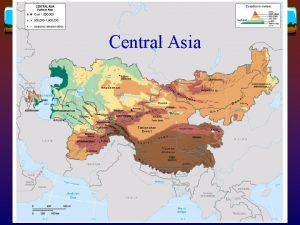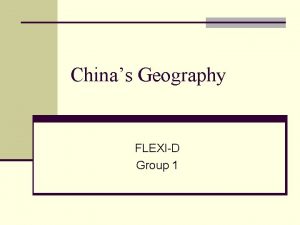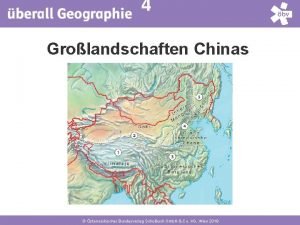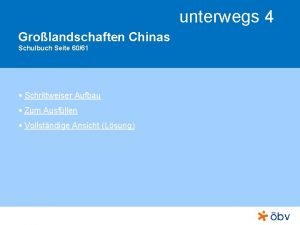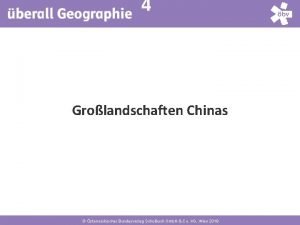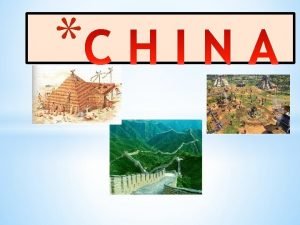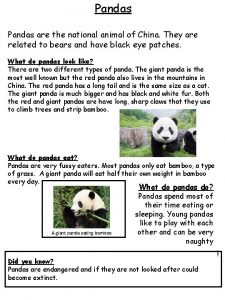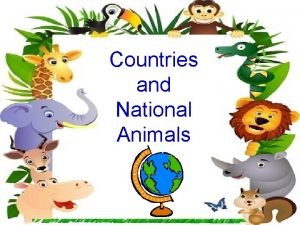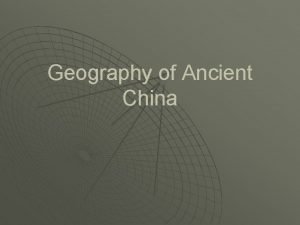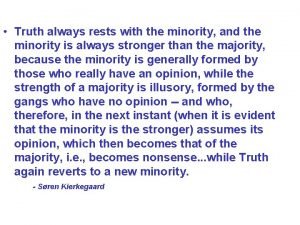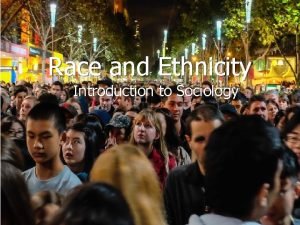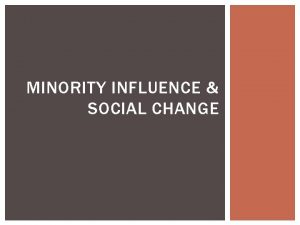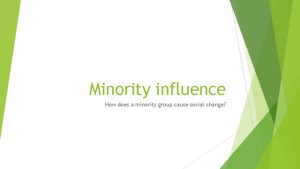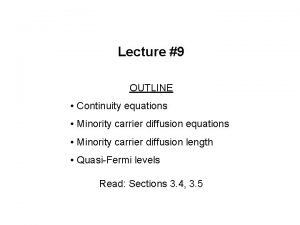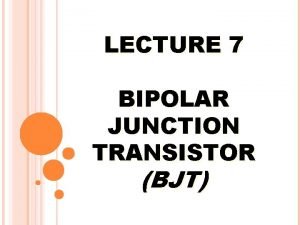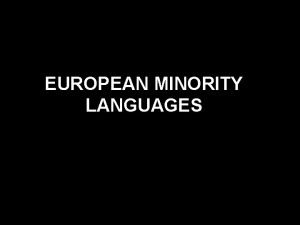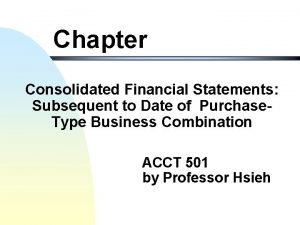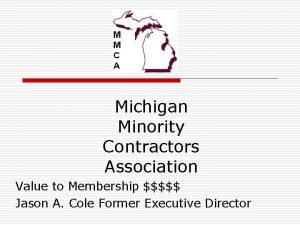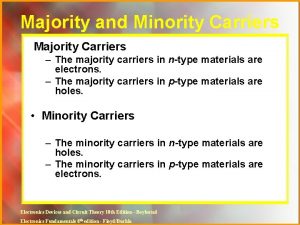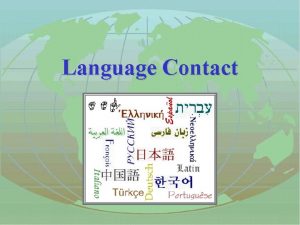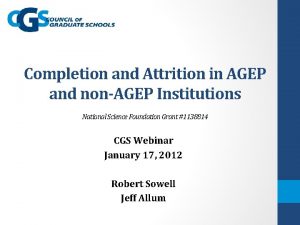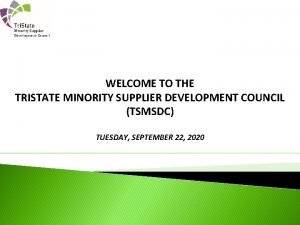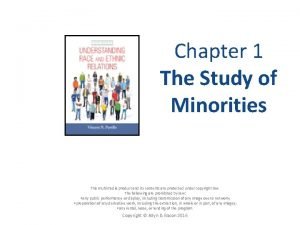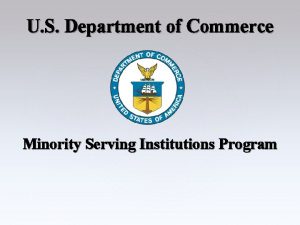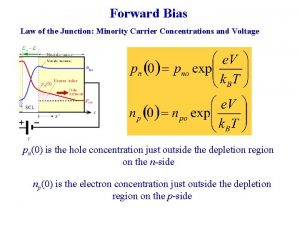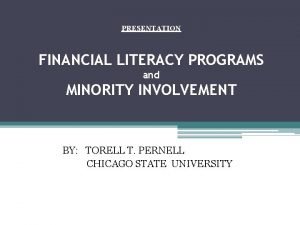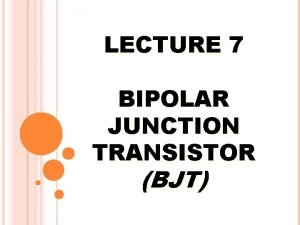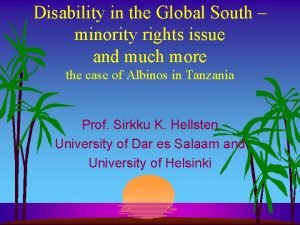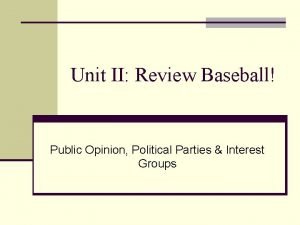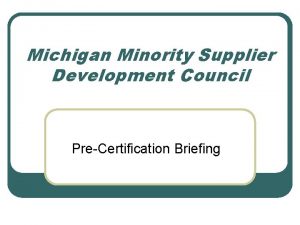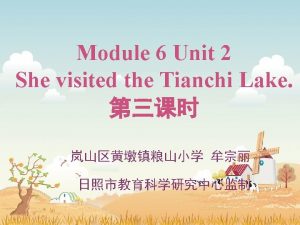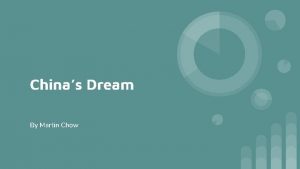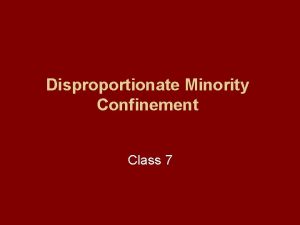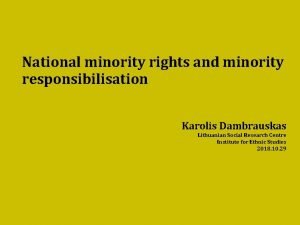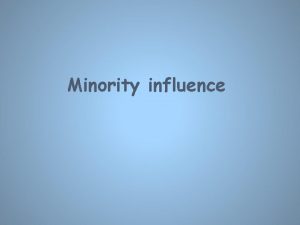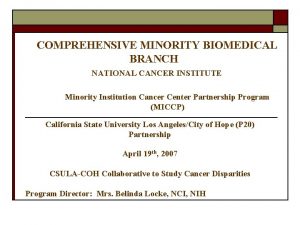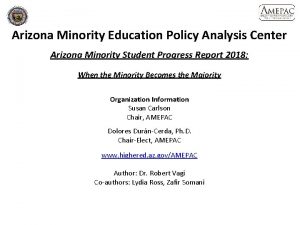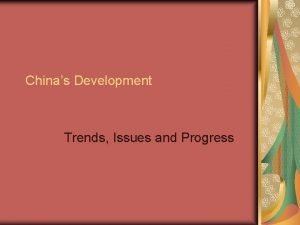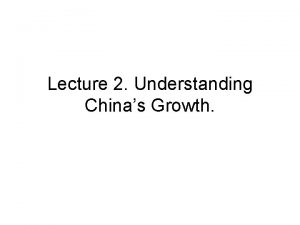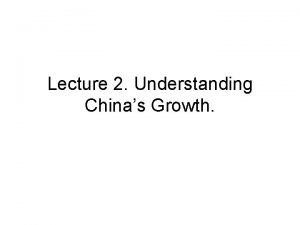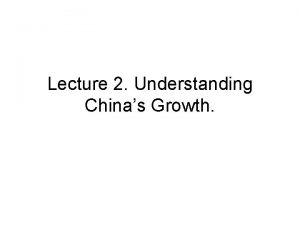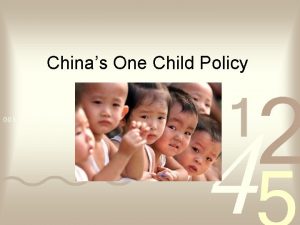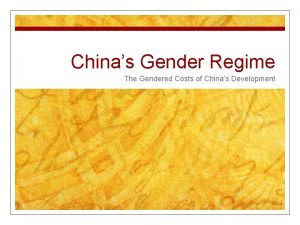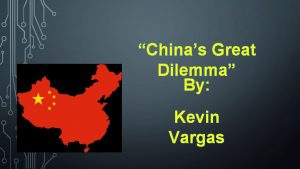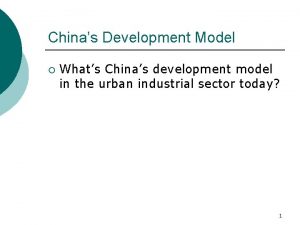Xinjiang A Case Study in Chinas Minority Policies










































- Slides: 42

Xinjiang: A Case Study in China’s Minority Policies Kara Abramson Congressional-Executive Commission on China

Overview of Today’s Talk • China’s Minority Policies • Case Study: Xinjiang – Setting the Scene: The geography and people of the region known today as Xinjiang – “Contested Histories”: Xinjiang’s Past – Xinjiang Under PRC Rule: Current Issues – What Happened in Urumqi in July 2009? – Xinjiang Beyond the Headlines: Contemporary Uyghur Culture

China’s Minority Policies 少数民族 Shǎoshù Mínzú

56

Historical Overview • Ethnicity in Chinese history • Ethnic Groups/Minzu in the PRC – System of categorization – Soviet Tradition • Fixed identities • Stalinist definition – Common territory, language, economy, and psychological nature – 民族�� Mínzú shíbié – 民族 作 mínzú gōngzuò


Ethnic Minorities Today • 8. 49% of the population, including: – Tibetan – Korean – Mongol – Russian – Tajik – Uyghur (Uighur/Uygur)




• Also: –Zhuang –Hui –Miao –Yi –Lhoba




China’s Minorities • Location: – About 5/8 ths of China’s total area • Languages: – Over 60, at least 5 different language families • Religions: – Muslim, Buddhist, “minority” religions, Christian



Regional Autonomy • By end of 2003: – 5 Provincial-level autonomous regions – 30 autonomous prefectures – 120 autonomous counties

Legal Framework for Autonomy: Regional Ethnic Autonomy Law (REAL) - Grants additional legislative powers - Describes scope of regional autonomy – – – Freedom to use and develop minority languages Freedom of religious belief Preferential policies Administration of finances Education in minority languages Train local cadres but also send skilled personnel from elsewhere in China to these regions

REAL successes and limitations • Gives recognition and protection for minority groups • Some leeway for local customs BUT • Vague wording • Legislation must be submitted to higher bodies for approval and must not contradict basic policies • Limited enforcement and monitoring • General Rule of Law issues

Case Study: Xinjiang Uighur Autonomous Region (XUAR) 新疆维吾尔自治区 Xīnjiāng Wéiwúěr Zìzhìqū

Setting the Scene: The geography and people of the region known today as Xinjiang http: //johomaps. com/as/china/xinjiang 1. html http: //xinjiang_noite. images 9. com/map_prc_xinjiang. html

Population • Total population 21. 81 million (1. 63% of China’s total) • Uyghurs ( ﺋۇﻴﻐۇﺮ ,维吾尔族,Wéiwú‘ěrzú,维族 ) – Turkic – Speak Uyghur (close to Uzbek and Turkish) – Sunni Muslim • Other groups include: – Han, Kazakhs, Kyrgyz, Tajiks, Mongols, Russian, Hui



“Contested Histories”: Xinjiang’s Past http: //www. nytimes. com/2008/11/19/world/asia/19 mummy. html http: //www. ewas. us/Spring. Death. 2010. htm

“Contested Histories” • • Uyghur Empire (744 -840, based in Mongolia) Uyghur state in the north (840 -1370) Karakhanid dynasty in the south (840 -1211) Chaghataids Mongols (14 th-17 th c. ) – Local rulers strong – Sufi influence • Jungars (late 17 th c. - mid-18 th c. ) • Qing (1750 s-1911) • East Turkistan Republic (aka East Turkistan Islamic Republic) (1933 -1934) • East Turkistan Republic (1944 -1949)

“Contested Histories”—Modern Uyghur Identity • East Turkistan/Uyghuristan • Turkic identity

Xinjiang Under PRC Rule: Current Issues • 1955 Xinjiang Uyghur Autonomous Region established • Minority Policy—Uyghurs as 少数民族 • Xinjiang in the news: human rights, terrorism, and Guantanamo

Security Measures and Terrorism • Reports of terrorist attacks in 1990 s and 2000 s • East Turkistan Islamic Movement (aka East Turkistan Islamic Party) placed on State Dept. Terrorist Exclusion List, UN list • Scope of Terrorist Threat Appears Unclear • Chinese government reporting on terrorism limited and inconsistent • Restrictions on free press hinder information gathering • Government has conflated ordinary criminal activity with terrorism and peaceful expressions of dissent with separatism

Religion • Constitution protects freedom of religious belief and “normal” religious activities • 5 recognized religions, including Islam • Islam in Xinjiang: – “Religious extremism” and “illegal religious activities” identified as threats to region’s security – Campaigns against private religious schools, curbs over access to mosques, observance of Ramadan, veiling and beards


Freedom of Expression • Regulation on Ethnic Unity • Nurmemet Yasin • Mehbube Ablesh

Representation in Government • NPC Representation • Head of Autonomous govt to be ethnic minority

Employment • Law encourages hiring of ethnic minorities and prohibits discrimination in employment, but…


Language and Education • Language and Education – Law says ethnic minorities may use own languages – Traditionally had 2 tracks for Schooling and Exams for minorities in China (including in Xinjiang) • 民考民 Mínkǎomín and 民考� Mínkǎohàn – New efforts to promote “Bilingual Education” have translated into decrease in Uyghur in Xinjiang

Development • Government support • Great Western Development • Some improvements, but also problems: – Distribution of resources – Lack of Input from local communities – Demographic pressures

What Happened in Urumqi in July 2009? • Reported attack on Uyghur factory workers in Guangdong in late June 2009 • Uyghurs demonstrate on July 5 – Initially peaceful, police reportedly use force, violent attacks take place

What Happened in Urumqi in July 2009? • Authorities blame World Uyghur Congress and its leader Rebiya Kadeer for organizing “riots” and instigating people in China

What Happened in Urumqi in July 2009? • July 7—Han revenge attacks, Uyghur women demonstrate • Internet shut down until May 2010 • Trials ongoing—for violent crimes and acts of free expression or peaceful protest • New Party head appointed, government unveils cure-all development plan in May 2010

Xinjiang Beyond the Headlines • Contemporary society • Literary tradition • Uyghur music
 Xinjiang
Xinjiang Best worst and average case
Best worst and average case Juego damas reglas
Juego damas reglas Whats chinas longest river
Whats chinas longest river China 4 großlandschaften
China 4 großlandschaften China großlandschaften lösungen
China großlandschaften lösungen Chinas physical features
Chinas physical features Chinas golden age
Chinas golden age Großlandschaften chinas karte
Großlandschaften chinas karte Regiones chinas
Regiones chinas China national animal
China national animal National animal of germany
National animal of germany Tomografia homero simpson
Tomografia homero simpson Ancient china deserts
Ancient china deserts Project failure case study
Project failure case study Truth always rests with the minority
Truth always rests with the minority Define minority group
Define minority group Behaviours that enable a minority to influence a majority
Behaviours that enable a minority to influence a majority Define minority group
Define minority group Continuity equation semiconductor
Continuity equation semiconductor Difference between npn and pnp transistor
Difference between npn and pnp transistor Minority dialect definition
Minority dialect definition Debtors ledger
Debtors ledger Minority interest example
Minority interest example Define delimit demarcate administrate
Define delimit demarcate administrate Michigan minority contractors association
Michigan minority contractors association Electronic devices floyd 10th edition
Electronic devices floyd 10th edition Indigenized varieties
Indigenized varieties Office of minority health resource center
Office of minority health resource center Doctoral initiative on minority attrition and completion
Doctoral initiative on minority attrition and completion Tsmsdc
Tsmsdc Minority consent dalam sosiologi adalah
Minority consent dalam sosiologi adalah Silent minority
Silent minority Minority chapter 1
Minority chapter 1 Minority serving institutions definition
Minority serving institutions definition Minority influence examples
Minority influence examples Fermi level
Fermi level Financial literacy at minority serving institutions
Financial literacy at minority serving institutions Pnp minority carrier distribution
Pnp minority carrier distribution Dominant minority
Dominant minority Minority pw
Minority pw The term “minority majority” refers to the fact that
The term “minority majority” refers to the fact that Michigan minority supplier development council
Michigan minority supplier development council
